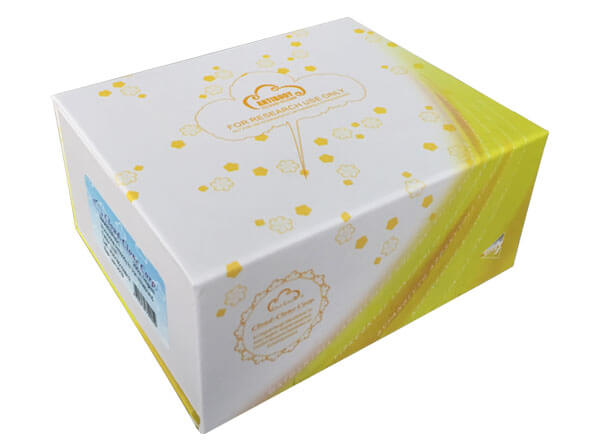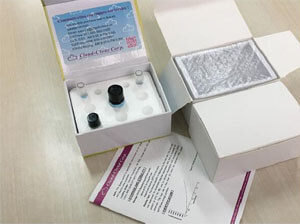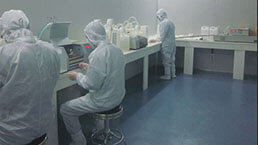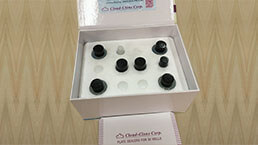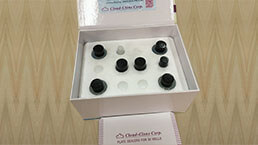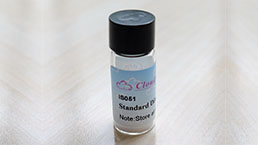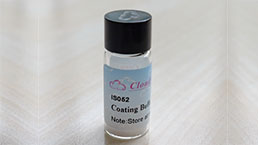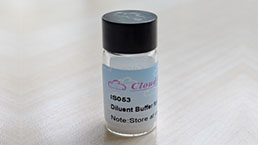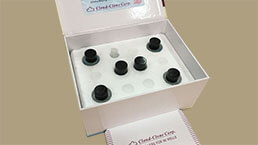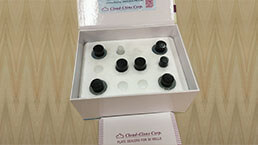ELISA Kit DIY Materials for Synuclein Alpha (SNCa) 

SNC-A; aSYN; PD1; PARK1; PARK4; NACP; Non-A Beta Component Of Alzheimer's Disease Amyloid Precursor Protein; Non-A4 component of amyloid precursor
- UOM
- FOB US$ 1,231.00 US$ 2,052.00 US$ 3,694.00 US$ 7,182.00 US$ 12,312.00
- Quantity
Overview
Properties
- Product No.KSB222Mu01
- Organism SpeciesMus musculus (Mouse) Same name, Different species.
- ApplicationsMain materials for "Do It (ELISA Kit) Yourself".
Research use only - Downloadn/a
- CategorySignal transductionNeuro science
- Reagent Contents Capture Antibody, Detection Antibody, Standard, Streptavidin-HRP, TMB Substrate, 96-well Plate
- Detectable SampleSerum, plasma, tissue homogenates, cell lysates, cell culture supernates and other biological fluids.
- Applicable PrincipleDouble-antibody Sandwich ELISA for Antigen Detection
- Detectable Range78-5000pg/mL
- Applicable Sensitivity28pg/mL
Sign into your account
Share a new citation as an author
Upload your experimental result
Review

Contact us
Please fill in the blank.
Specifity
The Abs in the kit have high sensitivity and excellent specificity for detection of Synuclein Alpha (SNCa). No significant cross-reactivity or interference between Synuclein Alpha (SNCa) and analogues was observed.
Usage
1. Coat the plates with 100μL per well of working solution of Capture Antibody.incubate overnight at 4°C or incubate at 37°C for 2 hours.
2. Aspirate and wash 1 time.
3. Block the plates with 200 μL per well of working solution of Blocking Buffer. Incubate at 37°C for 1.5 hours.
4. Aspirate and wash 1 time. The plates are now ready for sample detection, the protocol is the same as regular ELISA.
Storage
Antibodies, Standard and Streptavidin-HRP should be stored at -20°C. TMB should be stored at 4°C. 96-well Plate could be stored at room temperature. The contents are valid for twelve months. They are stable for one month after opening when stored at 4°C.
Support pack
Giveaways
Increment services
Citations
- Cerebrospinal fluid–based kinetic biomarkers of axonal transport in monitoring neurodegenerationPubMed: PMC3428100
- Lysosomal dysfunction increases exosome-mediated alpha-synuclein release and transmissionPubMed: PMC3107939
- Parkinson's disease induced pluripotent stem cells with triplication of the α-synuclein locusPubMed: PMC3265381
- Mutations of PARK Genes and Alpha-Synuclein and Parkin Concentrations in Parkinson’s DiseaseIntechopen:Source
- Apolipoprotein Eε4: A Biomarker for Executive Dysfunction among Parkinson's Disease Patients with Mild Cognitive Impairmentpubmed:29326545
- The anti-aging protein klotho alleviates injury of nigrostriatal dopaminergic pathway in 6-hydroxydopamine rat model of Parkinson's disease: Involvement of PKA/CaMKII/CREB signaling.pubmed:29107062
- Development and biochemical characterization of a mouse model of Parkinson's disease bearing defective glucocerebrosidase activityPubmed: 30521842
- Potential therapeutic effects of antagonizing adenosine A2A receptor, curcumin and niacin in rotenone-induced Parkinson's disease mice modelPubmed: 31820278
- Nose to brain delivery of rotigotine loaded chitosan nanoparticles in human SH-SY5Y neuroblastoma cells and animal model of Parkinson's diseasePubmed: 32084576
- Anti-α-synuclein ASO delivered to monoamine neurons prevents α-synuclein accumulation in a Parkinson's disease-like mouse model and in monkeysPubmed: 32810825



